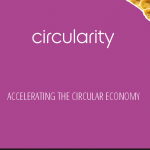Gevo sells $22M of “Clean Fuel Production Credits”
by Meghan Sapp (Biofuels Digest) In Colorado, on June 30, 2025, Gevo Intermediate HoldCo, LLC entered into a Tax Credit Transfer Agreement with a transferee bank pursuant to which Transferor agreed to supply “Clean Fuel Production Credits” to Transferee from the production of ethanol



.jpg)




